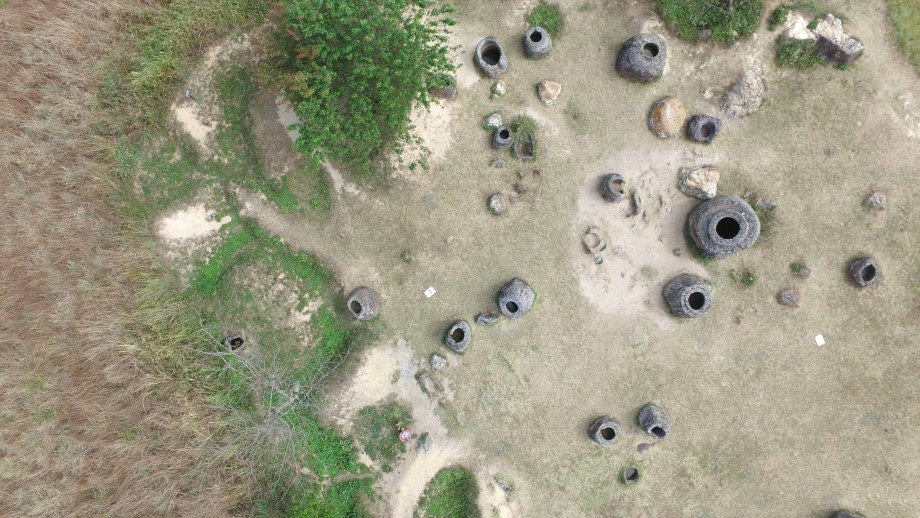Oct 20 2016
 The ANU dig site at the Plain of Jars as seen by drone. (Credit: ANU)
The ANU dig site at the Plain of Jars as seen by drone. (Credit: ANU)
A team of archeologists from The Australian National University (ANU) and Monash University are testing a new technology to construct a 3D virtual-reality map of the Plain of Jars in Laos, a place considered to be one of Asia's most mysterious sites.
Dr Dougald O'Reilly from the ANU School of Archeology and Anthropology said the technology called CAVE2™ uses drone footage to produce a virtual replica of archeology dig sites. The technology is based out of Monash University.
On top of mapping the three dig sites, we are doing the entire Plain of Jars landscape. A drone captures a set of 3D images every 10 centimeters and this data is put into a digital mold. You put on a headset and the virtual model feels like you're standing and walking around the site. As you move around the image moves as if you are at the location.
Dr Dougald O'Reilly, ANU
Identification of a burial site that the researchers then excavated was achieved using ground penetrating radar. That data was also loaded into CAVE2™ to prepare a 3D underground view. Dr O'Reilly stated that it would be possible for the technology to be adapted to perform 3D printing of the digital models, or into smartphones.
"It provides easy access to remote faraway places. Theoretically you could use the headset with your phone to visit a 3D map of any location," he said. "You could print a life-sized version of any CAVE2™ model. You could use them in museums rather than disrupting the archeologically record by moving artefacts."
Dr O'Reilly explained the technology would be highly advantageous to the field of archeology.
It allows you to revisit the site. Even right now I'm using it to look at the positioning of some of the materials I'm having radio-carbon dated. In terms of heritage preservation it's a useful tool. If you want to monitor the change in heritage sites through time you have that data.
Dr Dougald O'Reilly, ANU
The Plain of Jars was selected as a test site for CAVE2™ as there is a request to have the site added into the UNESCO World Heritage site list. The Plain of Jars dig project in central Laos happens to be the first big archeological dig at the site since the 1930s. The landscape consists of ancient carved stone jars measuring up to three meters in height; however their purpose is still a mystery.
In addition to the several large stone jars present at the site, the site also has a large sandstone disk and big quartz stones.
The research was jointly led by Dr O'Reilly and Dr Louise Shewan from Monash University.
Dr Shewan said the technology will be helpful for exploring sites that are not accessible by traditional archeological techniques, because of reasons such as unexploded land mines.
Of the over 80 known jar sites in Laos, only seven have been cleared of explosives.
Dr Louise Shewan, Monash Unversity